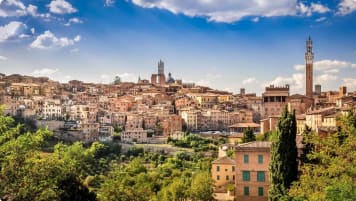Venice Peggy Guggenheim Museum: Backstory
Venice a curiosity, Merchants, pilgrims, gondolas, stories of espionage, the power of maps for trade carnival and the Peggy Guggenheim Museum. The stories fascinate, this article examines the history of the Peggy Guggenheim museum. Read and learn before joining as a senior couple of mature solo traveller a small group educational tour to Venice and Italy.
17 Dec 21 · 13 mins read
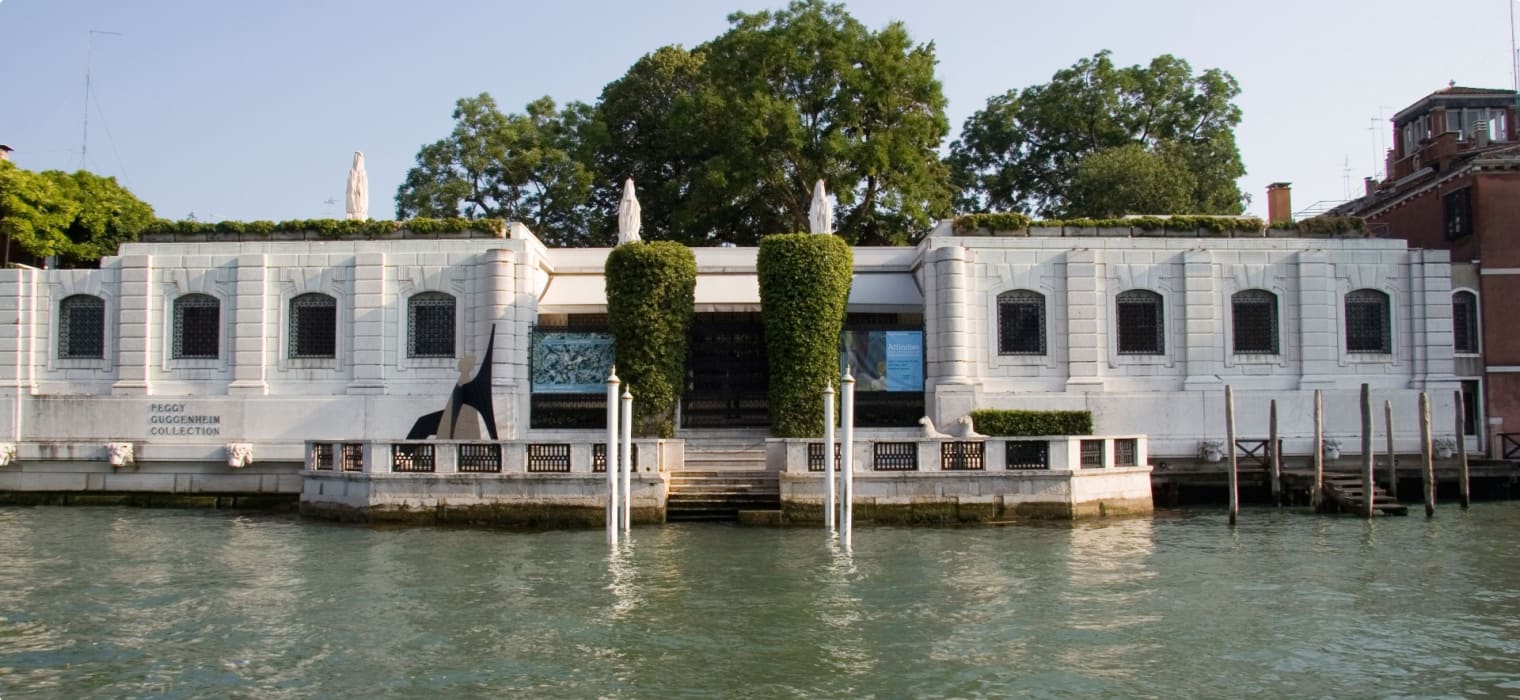
How the Guggenhein Venice, eventually became a gallery
“There is a fine historical irony in the fact that a building designed to glorify a patriarchal dynasty, and one that had been left to rot once that dynasty crumbled, was eventually rescued from obscurity by three independent single women.” (Mackrell, J 2017, The Unfinished Palazzo, Thames & Hudson Ltd, London)
The “unfinished palace” (Il palazzo non finito) – the Palazzo Venier dei Leoni in La Serenissima (Venice Italy). A mystery, a meeting place, an intended monument of dynasty pride and a historical landmark that tells many stories. Although it is said that a lion was once kept in the garden, the palazzo likely got its name from the lion’s heads of Istrian stone, which ornament the façade at the canal’s water level.
Venice is full of grandiose buildings, and the reasons why those buildings were built in the first place varied wildly from century to century.
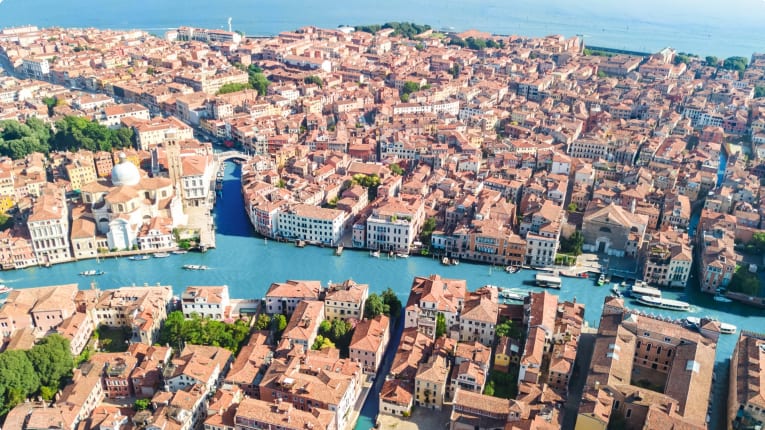
Often the practicality or purpose of a building was overshadowed by the compelling need for mightiness and self-importance of the nobles who commissioned it. But Venice wouldn’t be what it is today if the Golden City and its citizens didn’t strive for greatness for a century of wide-reaching trading links, a superior state-of-the-art banking system and an entrepreneurial spirit that created the Venice of tourism we know today. Today, we see buildings, bridges and monuments that survived many centuries and are part of European and Venice history: doge(s), the Venetian republic, the Middle Ages, the rule of the Roman Empire and Byzantine Empire, the notorious Ottoman Turks, the Fourth Crusade, Venetian carnival, Marco Polo and his travel on the silk road and Napoleon Bonaparte.
On the eastern side of the Grand Canal, where the waterways stretch into the Venetian lagoon, the Venetian waterfront turns into a flamboyant display of architectural styles and colours. A profusion of building inventions exhibiting centuries of gothic palazzos ornamented with mosaic and latticed stone, classical facades and gloomy stucco villas. One building that stands out from the others is the Palazzo Venier dei Leoni which today houses the Peggy Guggenheim Collection. This building seems too straight-lined, too white and too new to stand amongst the dusky collection of historical artefacts made out of bricks that float over the waters of Venice. In a city where seemingly no time exists, one structure endured many challenges but persisted against time, money and war.
The Palazzo came to life
The Venier family commissioned the Palazzo Venier in the mid-18 th century. The Veniers were one of the great dynasties that shaped life and politics in Venice. Their ancestry reaches back to the Emperors Valerian and Gallienus, who ruled Rome in the 3rd century. It is said that the Veniers were one of the earliest settlers in the Venice lagoon, and their name appeared originally in official documents in the year 1009. The Veniers rose to prominence and were one of the families listed in the city’s Golden Book of nobility who significantly participated in the Great Council. Doge(s), procurators, archbishops, admirals, and consuls resulted from this family that owned extensive property holdings in Venice, Dalmatia, and Veronese.
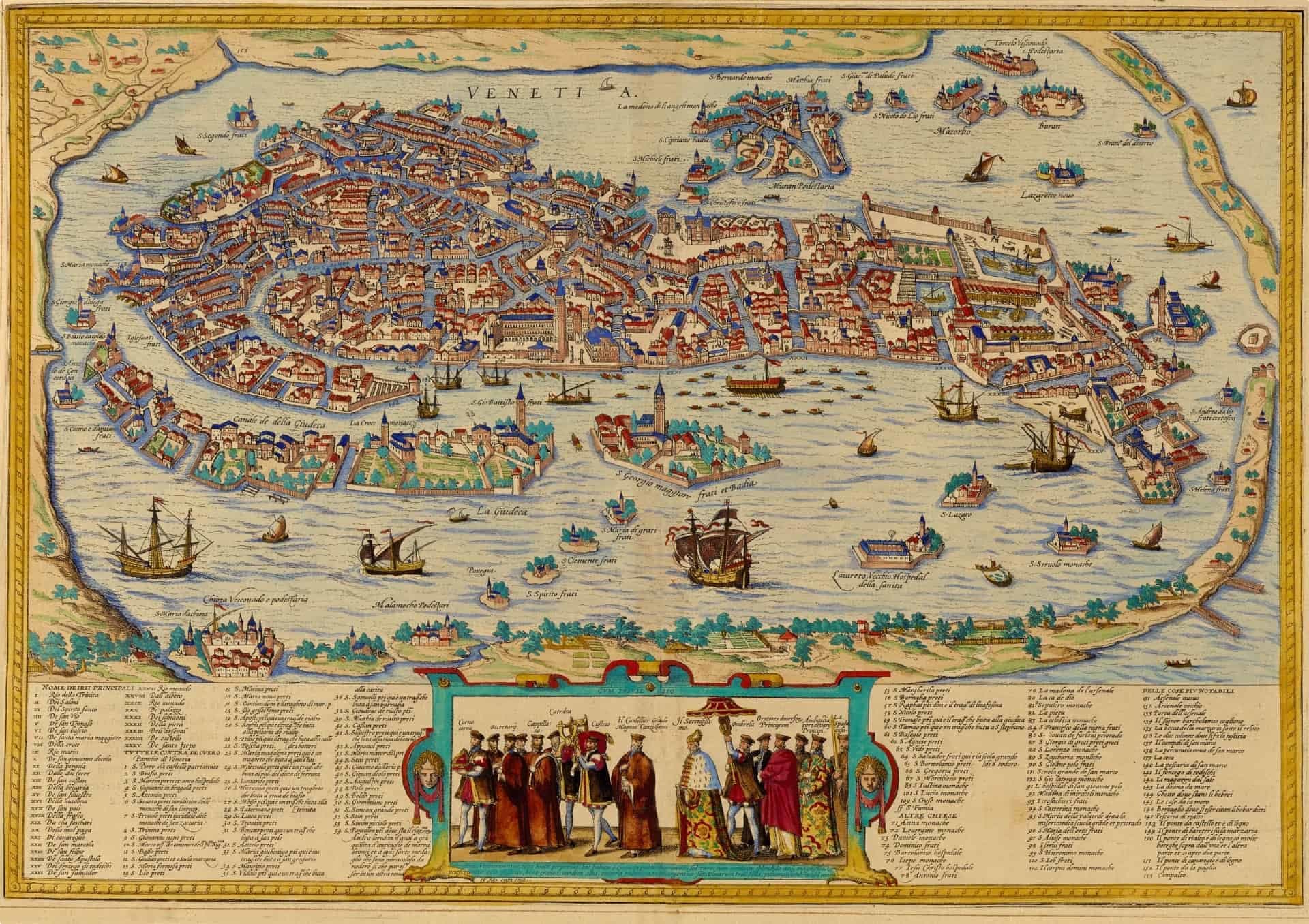
A successful merchant family who received recognition by monuments, churches, streets and palaces being named after them. The foundation of the palazzo, which was meant to be the extended Venier family home, was laid in 1752. Their new palazzo — five stories high and strutting with pillars and pediments — was intended as a monument to the family name. But it never came to this, and the palazzo was never finished. The construction of the palazzo came to an abrupt halt, and the building ended up being a miniature version of its planned grand structure. Why this happened is unclear, and many theories include the downturn of fortunes for the Venetian nobility, the lack of male heirs within the Venier family or the simple impossibility of building such a large structure on marsh terrain. Another factor would have been Napoleon’s occupation and later the Austrian rule. Whatever the reason, the palazzo was left unfinished at a dwarfish size, and only a single story and two rooms were completed.
The Italian; Marchesa Luisa Casati – The Living Work of Art
After the death of Nicolò Venier in 1780, the palazzo was inherited by a cousin and then went through two other owners before it was rented to Marchesa Luisa Casati. Luisa was the first of the trio of colourful women to occupy the palazzo after leaving the Venier family and French aristocracy.
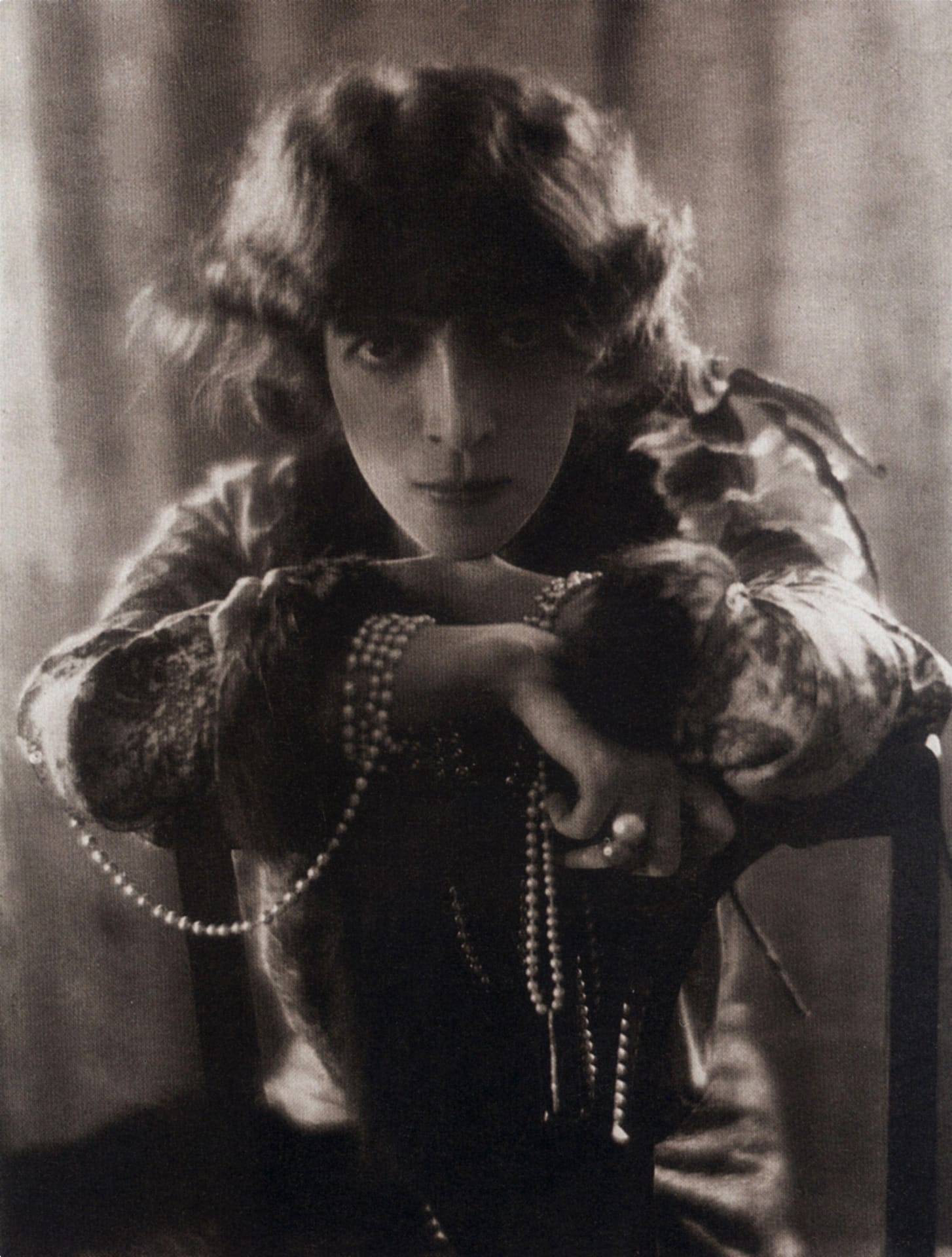
Venice has always been a place that stimulates fantasy – the floating city that drifts above the waters of the Adriatic Sea and where solid stone disintegrates into ocean and light. The city’s artistic landscape provided the perfect platform for a parallel world between the patriarchy and the theatrical stage of Venice’s entertainment-seeking population. The palazzo endured many challenges and faced demise by ivy or demolition. Its unfinished state made it the perfect victim of caving roofs and crumbling walls. Nonetheless, the building survived against all odds for 150 years until three serious occupants came around to transform the palazzo into different venues.
Luisa came to the palazzo in 1910 and rented it for 14 years. Her parties that followed were known as a Venetian wonder. During her tenancy, the Marchesa created the perfect illusion of artistic entertainment that attracted everyone who wanted to be seen, express themselves or just get a glimpse of the legendary Marchesa herself. In a city rich with carnival and masquerades, it was surprising that someone managed to upstage the regular festivities that Venice was notorious for. She was born in Milan, and her parents experienced a time when Northern Italy and Milan were under Australian rule.
Luisa lived a life of luxury on the back of her inheritance coming from her father’s industrial fortune. She was one of the wealthiest women in Italy, but her funds weren’t infinite. She was the wife of Marchese Camilli Casati and connected to the highest ranks of Italian nobility. At some point during her life, Luisa met the notorious writer and art enthusiast Gabriele D’Annunzio, who influenced her to leave conventional society behind and live a life of artistic expression. Whether she had fallen under the spell of D’Annunzio or whether there were other reasons why her marriage failed – rumours stated Casati didn’t want to be responsible for her debt – the couple was legally separated in 1914.
Venice became her theatre, and the Venier palazzo her stage. Luisa was eccentric in the most elegant sense of the word, her pet collection infamous, and her dress sense somewhat reminds us of a Lada Gaga of the early 20th century than a noble lady with traditional vanity. Luisa turned heads whenever she boarded a gondola or processed through the Piazza di San Marco (Saint Mark Square) in outfits that became a tourist attraction. In 1924, the palazzo was sold to a new owner, and Luisa had to leave her fantasy life behind. Her wealth was dwindling, and the eviction would have come whether there was a new owner or not. The Mussolini government had plans for an efficient and industrial Italy, and this left not much room for her romantically ruined palazzo. She moved to Paris to re-establish herself and relive Venice’s parties and summer nights. But it was never the same again, and Luisa died in 1957 at her last residence in London.
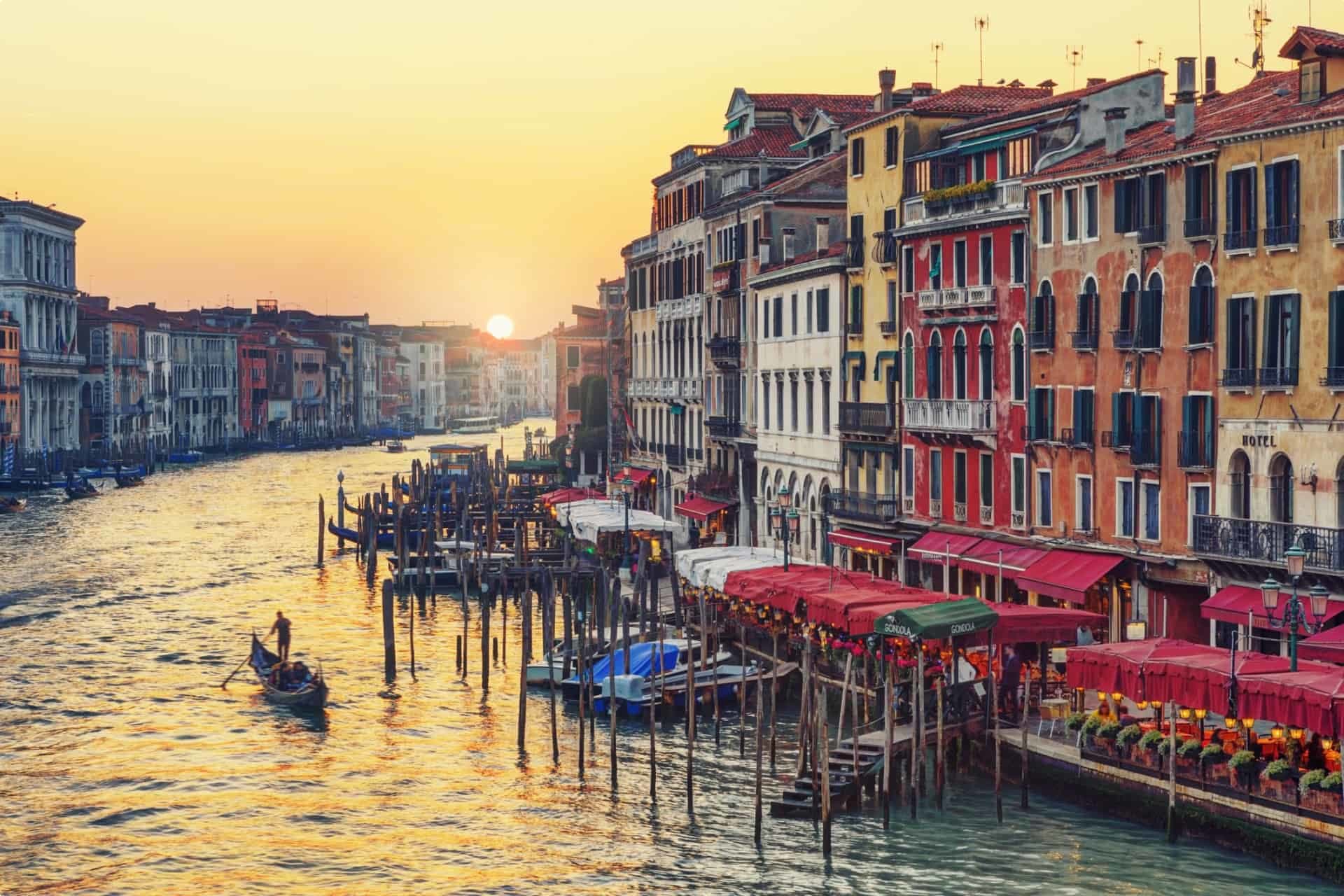
The English: Lady Doris Castlerosse – The Salonnière
Lady Doris Castlerosse was next in line to make the palazzo a special place, and she was drawn to the lure of Venetian life. The city represented a chance to relaunch her social career and reputation after her husband had left her, and within the patrician society various rumours of affairs had spread. Venice was much more forgiving compared to London, and the palazzo was the perfect place to forget her social dilemma and start anew. She viewed and bought the palazzo in 1936 and planned to create a chic and contemporary modern gloss version of it. The Venice that Luisa saw had changed into an urban city that was more functional than romantic, and Doris wanted the palazzo to be just that. A stylish cosmopolitan salon. Coming from a middle-class English background, Doris married a lord in line with her ambitions to leave her mundane life behind and start a journey to a sophisticated life of glamour and luxury. Before her marriage, she had established herself in London and used her witty charm and good looks to find a job and generate a long list of lovers of name and rank. She met Valentine Browne, who carried the title Viscount Castlerosse when he was engaged with the Sunday Express in London as a celebrity gossip writer. The couple got married in 1928, and Doris received her long-awaited title as Viscountess Castlerosse. In the early years of their marriage, she became entangled in an affair with Randolph Churchill, son of the future prime minister. Later, it was said that she also had an affair with Winston Churchill himself, but these rumours were never confirmed.
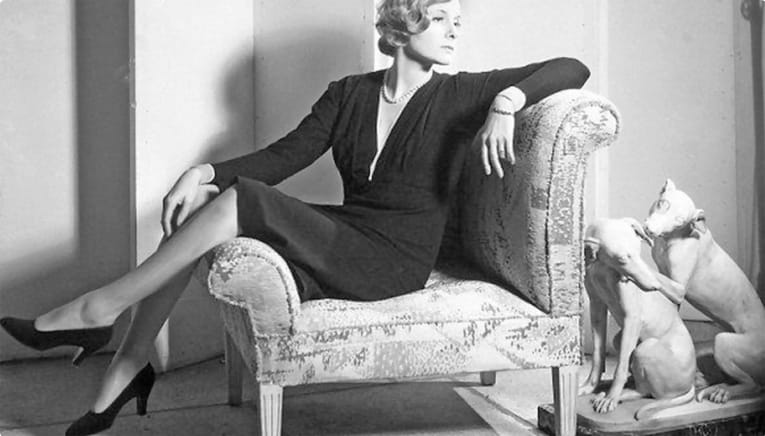
Doris and Valentine had a childless marriage and divorced in 1938. Doris headed first to Venice to escape her marriage’s battleground and experience the city and its appeal in 1932. At that point, Venice was under political repression, and the amusement society had to make compromises. The Venice carnival had been shortened, and the Venetian version of sex, drugs & rock and roll turned into an underground operation. The viscountess had heard many stories of Luisa’s residency at the palazzo, and becoming La Casati’s successor was high up on her list of achievements.
Doris collaborated financially and socially with her friend Margot Liddon Flick Hoffman, an American heiress, by involving the true Venetian master architect Schioppa to remodel the palazzo. The completed restoration included a dining room and kitchen, a sunny sitting room, six bedrooms and bathrooms with sunken baths. Highlights of the interior were Verona marble terrazzo and decorative stucco. A season of parties was held, and the new Venetian hostess was in her comfort zone with her wealthy and influential friends visiting her shiny palazzo. World War II put an end to Lady Castlerosse’s intentions and dreams. Italy became an enemy of Britain, and Doris couldn’t return to Venice, her palazzo and her life as a society hostess. She never returned to Venice and the palazzo after closing its doors in 1938. Her life ended tragically with an accidental overdose of sleeping pills in 1942, and with that, the era of a salonnière at the palazzo ended.
Lady Castlerosse article in Tatler magazine
The aftermath of World War II
The palazzo laid empty for a few years. It had served three different armies as soldiers’ billet during the war, and its state was far from glossy. It had been vandalised and left to fight for itself. The interior was widely damaged, and the furniture had been stolen or used for firewood. Doris had left the palazzo in her will to her friend Margot, but she didn’t want to inherit the building or her debts. Doris’s brother put the palazzo back on the market. Europe laid in ruins, economies struggled, and the tourist industry was non-existing. The market for luxuries was vacant, and who wanted to buy a damaged palazzo on the Grand Canal? Until Peggy Guggenheim showed up on the waterfront terrace, and once again, the Palazzo Venier dei Leoni persuaded a woman with its romantic potential. It needed someone to turn it once more into a place that holds dreams and artistic expression. Peggy transformed the neglected building to showcase her remarkable art collection and until today is the palazzo home to the famous Peggy Guggenheim Collection.
The American; Peggy Guggenheim – The Collector
Peggy bought the Venier palace in 1948, and it fulfilled a long-held dream for her. She adored Venice, had visited it many times and called Venice her “miracle city” that she had fallen in love with. She was on the hunt for a refuge, a place that would be without conflict and noise and far away from her personal challenges. Peggy first visited Venice in 1924 with her first husband, Laurence Vail, and for her, Venice was art in every painting, every stone and around every corner in the endless streets between the canals of the Venetian lagoon. Marguerite “Peggy” Guggenheim grew up in the New Yorker Upper East Side and had a privileged life in a wealthy family environment. Her father died in the catastrophic collision of the RMS Titanic in 1912, and Peggy continued living on a smaller scale without the giant fortune the Guggenheim name generally brought with it. Later in life, she described herself as the enfant terrible of the family because of her rebellious teenage years and her lack of identification with the rest of the Guggenheim clan.
At 21, Peggy inherited a significant sum, which brought her financial independence. At times, Peggy despised her wealth, spent her money on experimental paintings, and donated money to poor writers and artists. One could say that this was the start of her career as a passionate art collector. With further inheritance she received after her mother’s death, Peggy opened the Guggenheim Jeune gallery in London in 1938. She began collecting at least one piece of artwork from each exhibition that was held at the Jeune. After two years, Peggy closed the Jeune and planned to open a museum in London. Those plans were disrupted and eventually abandoned due to Hitler invading many European countries. She took her newly acquired art collection from Paris to New York and opened the Art of This Century Gallery in 1942. It was a great success, and the design and the selection of art were celebrated by the art scene all around the world. In 1946, Peggy published her autobiography Out of this Century: Confessions of an Art Addict. The book became a widespread scandal as a consequence of her open and honest stories about hundreds of affairs and sexual encounters she had with writers and artists. Her family was shocked, and the publication certainly didn’t improve her relationship with her family.
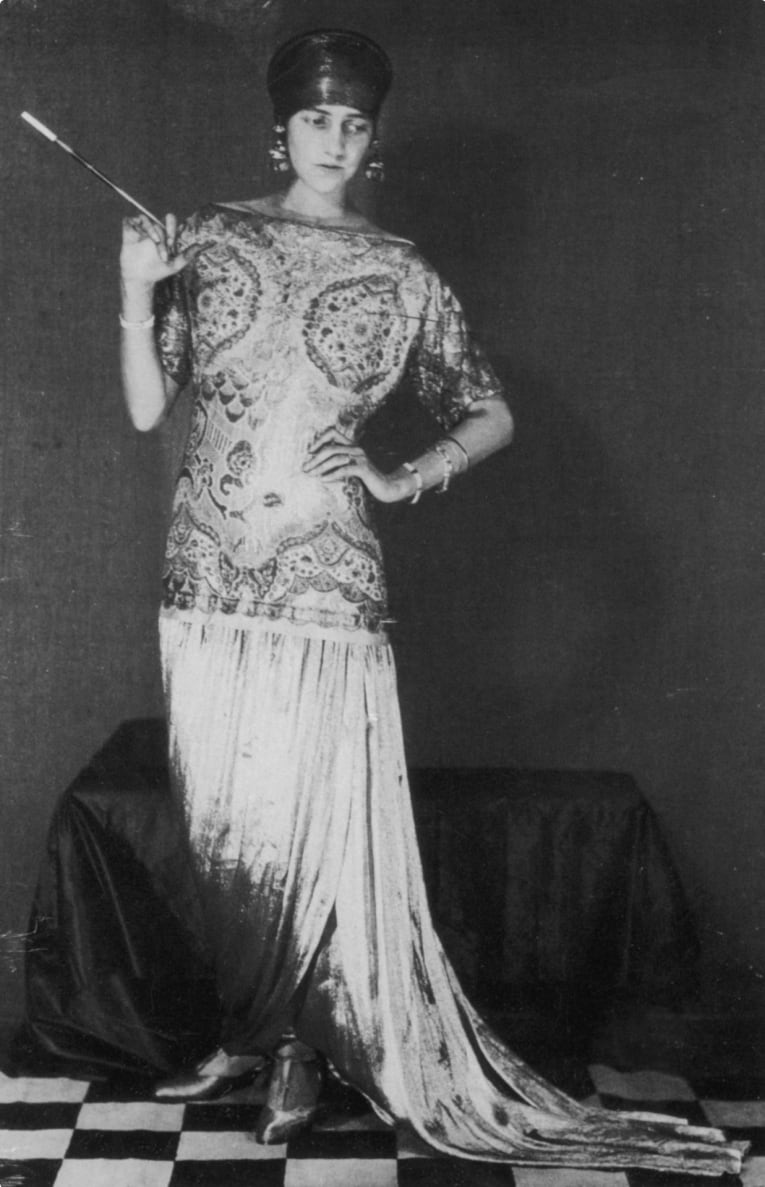
The move and purchase of the palazzo was the fresh start she was looking for. In 1948, she was invited to the La Biennale to exhibit her collection, and this marked the first time many American artists such as Pollock were seen in Europe. The Palazzo Venier dei Leoni became her home for the rest of her life and was opened to the public as a museum in 1951. The entire building, including Peggy’s private space, became part of the museum, and every room housed art in its various forms, carefully incorporating the modern décor of the living space. Later, the palazzo received an extension in the form of a garden pavilion. The palazzo was subject to thieves many times, and paintings were stolen. Luckily, all the stolen art was recovered. Peggy owned a gondola, and hers was the last private gondola in Venice – a sunset gondola ride was her sacred activity. Venice bestowed upon her an Honorary Citizenship in 1962. After many years of contemplation, Peggy decided to donate the Palazzo Venier in 1970 to the Solomon R. Guggenheim Museum that is in New York. Her uncle had invited her in 1969 to New York to show her collection, and with that, her long-estranged family ties might have healed a little for her to make that decision. In 1976, she donated her entire collection to the museum under the condition that it remained in Venice. Peggy continued to collect art and be a patron of modernism until 1973 and died in 1979. Her ashes remain on the grounds of her Venetian palazzo.
The art critic Allison McNearney wrote of the Peggy Guggenheim collection, “It is not only one of the premier collections of modern art in the world, featuring over 300 acclaimed works by over 100 of the most influential artists of the 20th-century, but it also has played an integral role in turning Venice into a mecca for contemporary art.” Peggy was celebrated as an intrepid, visionary collector and patron of modern art though she never regarded herself as a collector. She treated the paintings as her loving family, one that she felt she never really had. The Peggy Guggenheim Collection is known as one of the greatest masterpieces of the modern art world, and the Palazzo Venier dei Leoni welcomes over 400,000 visitors every year. The remarkable collection of Picassos, Kandinskys, Pollocks, Brancusis and Klees is one of its kind and has never been repeated anywhere else in the world. The palazzo stands decorous and calm amongst waterbuses and motorboats hurrying along the canals, the proud gondoliers signing for their patrons and the street vendors advertising their goods from the Piazza San Marco to the Rialto bridge. It is a collection of icons and artefacts that is irreplaceable and impossible to value. The male-dominated art world – past and present – was inclined to point to Peggy’s liberated private life rather than her achievements in the world of art. There are two ways to interpret her published memoir: Indulging in the latter, getting lost in gossip and love affairs, or honouring Peggy Guggenheim for her life’s work and extraordinary contributions.
One would think that Nicolò Venier had a different future for the palazzo in mind when he commissioned it. He would never have in his wildest dreams imagined the style and female prerogative that fashioned the palazzo as we know it today. Luisa Casati, Doris Castlerosse and Peggy Guggenheim shaped their lives and the palazzo, respectively: Luisa made it legendary with a hint of scandalous. Doris gave it elegance and a little pretentious luxury. Peggy transformed it into one of the world’s magnificent museums and one of Venice’s most visited buildings. Three lambs amongst the lions or three lionesses amongst the sheep?
Today as the Venice Guggenheim
Visiting the palazzo could be the highlight of a Venice and Italy tour. Take a gondola ride across the Grand canal and step onto the terrace to marvel at this building that holds so much fanscinating Venetian history. Odyssey offers a small group tour of Venice for mature and senior couples or solo traveller(s) and many other Italian destinations. Our local guide offers guided walking tour(s) to marvel at the Doges Palace, a private tour(s) giving the expert guide the chance to take a traveler to places like the Rialto bridge or day trips to the many of the beautiful islands located nearby. The guided Venice tour can be combined with a classic Italy tour visiting remarkable landmarks and magical places with a tour company specialised in Italy small group tours: Southern Italy, Cinque Terre, Amalfi Coast, Tuscany, Lake Como, Sicily, Lake Garda, Lake Maggiore, Milan, Pompeii, Central Italy, sites of Ancient Rome (the “eternal city”) and Vatican city.
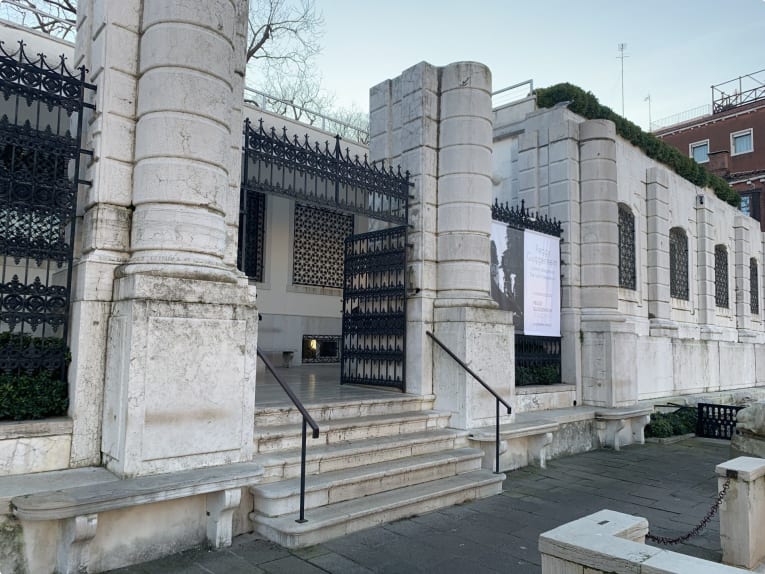
Odyssey started in 1983 as a collaboration between the Universities of Australia and New Zealand in the continuing adult education market, so it is almost 40 years old. The company has been stewarding fellow travellers on an ever-expanding collection of diverse and curious small group tours. Tours are supported by a great group of leaders who are typically retired academics and schoolteachers with a passion for continuing to be curious and sharing knowledge with you.
Small is Beautiful – Economics as if People Mattered is a collection of essays by E F Schumacher published in 1973. He sets out the case for the community, not corporations, as the model for economic success. It influences us in all we do. For Odyssey Travellers, the term “small is beautiful” captures the essence of the experience offered. We endeavour:
- to provide touring programs that stimulate the mind, ideally changing perspectives and perceptions through travel and shared knowledge,
- to offer small groups for like-minded people to explore,
- to foster a collegiate, open touring platform encouraging friendships to be made and journeys shared,
- to tread softly in the places we visit and not overwhelm the art galleries, museums, environment, or accommodation we use.
As a small team, we are orientated to learning about you the traveller, ensuring you are treated the way you wish to be treated, following the adage “treating others how you wish to be treated yourself”. When you travel with us, you may be part of a small group, typically 8-14 people, and be part of a small business group that averages some 40 people per week travelling with us all around the world. Our scale of operation and tours anywhere in the world are orientated for the selective few, not the many.
By travelling with us, you assist us in supporting, each year, at least one academically bright University student who might be struggling financially to continue their studies, with a scholarship to underpin those studies for at least one year.
Related Tours
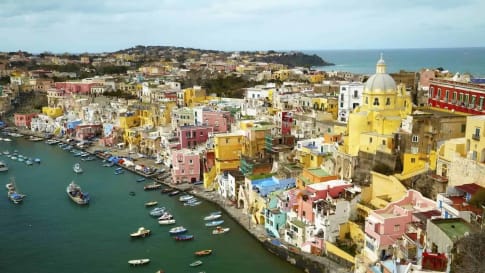
22 days
Jan, Apr, SepAncient History of Southern Italy & Sicily group tours
Visiting Italy
Our program for senior travellers, as well as featuring the rugged countryside of Southern Italy, also encompasses learning about the many civilisations that have shaped this land. We learn about the influence of the early Phoenicians, Greeks, Romans, Byzantines, Saracens, and Aragonese.
From A$16,995 AUD
View Tour
20 days
May, OctCaravaggio’s Journey | Small Group Tour in Italy
Visiting Italy, Malta
On this small group tour of Italy and Malta for mature and senior couples and solo travellers we trace the life of Caravaggio, exploring the artistic works he left behind and the tumultuous life he led. We follow him from his birthplace in Milan to Rome, Malta, Sicily and Naples. In each place he lived Caravaggio left behind a rich legacy of art for us to admire.
From A$15,125 AUD
View Tour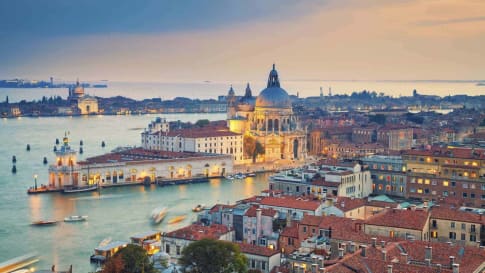
27 days
DecEuropean Cities Small Group History and Cultural Winter Tour
Visiting Albania, Croatia
An escorted tour A Journey that commences in Rome and takes in 12 destinations along its journey to Athens. This is an off season small group journey with like minded people. A small group tour across Southern Europe with local guides sharing authentic in-country authentic experiences for mature couples and solo travellers.
From A$17,295 AUD
View Tour
22 days
Mar, Sep, MayFlorence: Living in a Renaissance City
Visiting Italy
A small group tour with like minded people, couples or solo travellers, that is based in Florence. An authentic experience of living in this Renaissance city The daily itineraries draw on local guides to share their knowledge on this unique European tour. Trips to Vinci, Sienna and San Gimignano are included.
From A$14,375 AUD
View Tour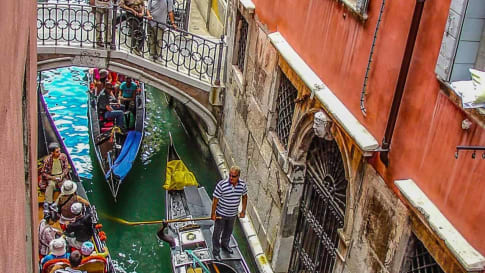
18 days
Sep, AprSmall group tour to Venice and Genoa
Visiting Italy
City pairs and rivalries exist. When spice, gold, steel swords and cloth where major commodities in the Mediterranean then Venice and Genoa fought for market share. Venice offered mercenaries, Genoa, banks. Italian history tour for those interested in joining a small group educational tour for senior couple and mature solo travellers.
From A$10,995 AUD
View Tour
18 days
Aug, SepArt and History of Italy | Small Group Tour for seniors
Visiting Italy
Taken as a whole, Italian Civilization (which includes, of course, the splendid inheritance of Ancient Rome) is absolutely foundational to Western culture. Music, Painting, Sculpture, Architecture, Literature, Philosophy, Law and Politics all derive from Italy or were adapted and transformed through the medium of Italy.
From A$16,695 AUD
View TourRelated Articles

Around the World in Six Coffees: Italy, France, Japan, China, Morocco & Argentina
Around the World in Six Coffees: Italy, France, Japan, China, Morocco & Argentina Order a cappuccino in Italy after 11am and expect to receive strange looks. In Argentina, don’t be surprised when your coffee order…
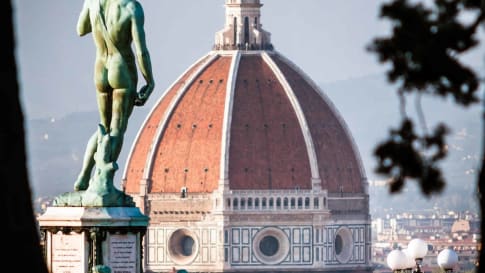
Brunelleschi's Dome: The Amateur turned Renaissance Genius
Filippo Brunelleschi. We will look at who he was and how he came to win the competition to design the dome for Florence's cathedral.

Carnivals of Venice
Article for senior couple and mature solo travellers joining a small group history tour visiting Venice and beyond to Italy, Greece, Turkey the Islands of the Eastern and Western Mediterranean and the Northern shores of Egypt, Tunisia. Learn about the role of Venice as emerging point of trade and navies for hire in the middle ages through to the renaissance.
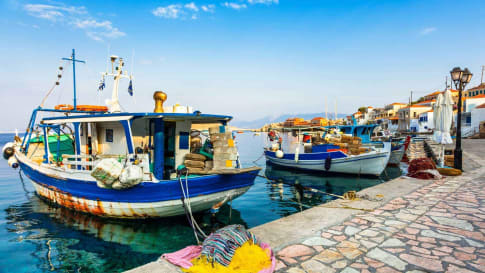
Empires Crossing the Mediterranean: 1130-1300
As a sea connecting continents and stretching from the Atlantic Ocean in the west to Asia in the east, the Mediterranean has for centuries been a centre of trade and exploration.
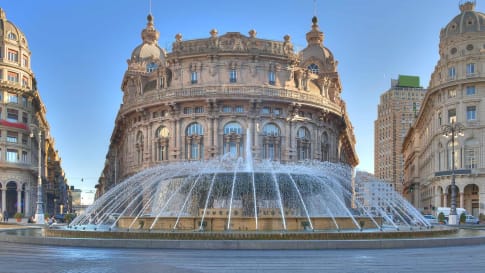
History of Genoa, Rival to Venice
In this article, we will look at the history of Genoa, and its rivalry with Venice that led to several wars fought between the two city-states in the 12th to 14th centuries.

Learning about Caravaggio's Paintings: The Definitive Guide for Seniors
Caravaggio’s Paintings Michelangelo Merisi da Caravaggio (1571-1610) was a leading 16th century Italian painter whose short but tempestuous life rivalled the controversy and drama he created through his highly influential art. Born in Lombardy, northern…

Secrets of Venice: A History of Espionage
Secret Venice: The Council of Ten and Medieval Espionage The city-state of Venice emerged on a lagoon from the ruins of the Roman and Byzantine empires in the 9th century and grew to become the greatest…

Venice and its Merchants
An article that takes you on a journey to Venice in the Middle Ages and beyond. The famous merchants of 'La Serenissima' who dominated this medieval powerhouse for hundreds of years. Learn before joining one of the small group tours for mature and senior travellers couples and solo travellers to Venice and many other destinations in Italy.

Venice and the History of Maps
Venetian Maps and How they Ruled the World ‘Venice was always a frontier,’ Peter Ackroyd (2009) declares in Venice: Pure City. ‘When the empire was divided in the time of Charlemagne, the lagoons of Venice…
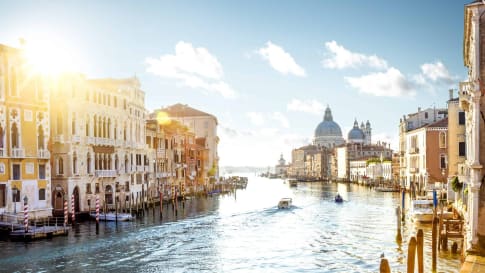
Venice, Italy
Explore the sights and wonders of Venice, 'La Serenissima'. A medieval powerhouse, with its stunning architecture, iconic canals, waterways and gondolas. Odyssey offers small group tours for mature and senior travellers couples and solo travelers to Venice and Italy.
